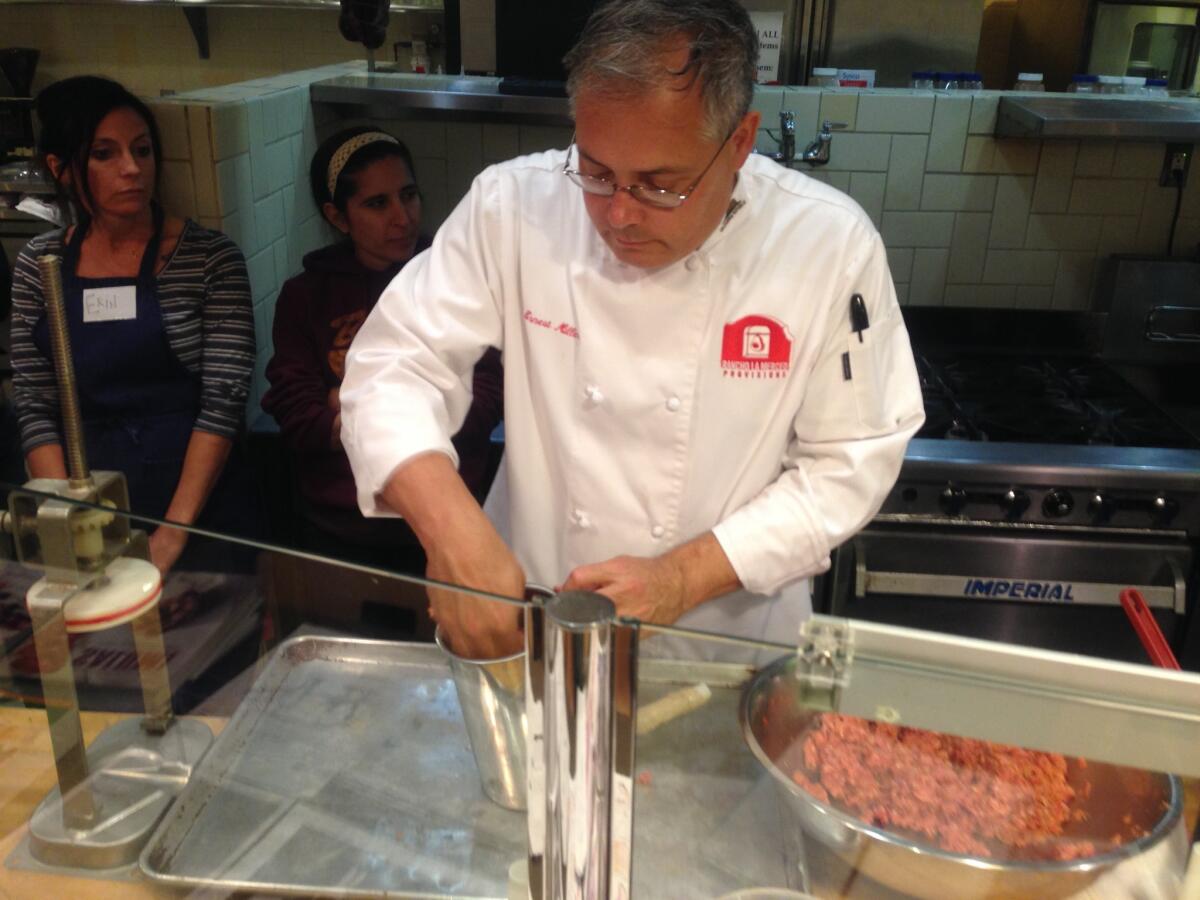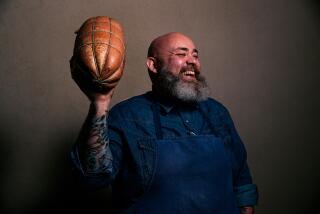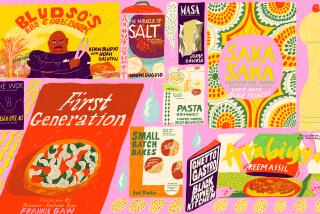Making homemade cured meats, including bacon with pomegranate syrup

When I signed up for a course in canning and preserving, I wasn’t thinking much about pigs. The images in my mind were more of strawberries and cucumber pickles. Maybe beets. But of course there’s an entire world of preserved meat out there.
The preserved meat of my childhood was mostly frozen; my parents bought a half cow at a time, cheaper than buying smaller bits. And it was chipped beef on toast; the tiny jar of thinly sliced beef that my mom could stretch to feed five of us. And then we had a juice glass to boot.
I’ve since, of course, come to appreciate some other forms: prosciutto, Spanish hams, the vast array of sausages and other dried meats.
Ernest Miller, the teacher of the 12-week course held in Hollywood at the Farmer’s Kitchen cafe, introduced a guest teacher, chef and caterer Paul Buchanan, who walked us through the basics of salumi. We made Italian pork sausage -- a process that was a bit much for at least one of the vegans in the class.
Miller set bacon to cure for the next class. Bacon with a twist on the usual maple-flavored cure: This one is flavored with homemade pomegranate syrup. (“I’m a California chef,” he said.) It’s another layer of using our skills, because Miller taught us how to make pomegranate jelly a couple of weeks ago.
Just as we learned for putting up fruit preserves, it’s crucial to follow the safety rules. It might seem riskier with raw meat, but jam can be dangerous if it’s not prepared properly too. He recommended a book called “Salumi,” by Michael Ruhlman and Brian Polcyn.
Buchanan buys pigs for butchering directly from the farmer; he said he wants to know how the animals lived, what they ate. And he wants all the parts; he uses intestines for sausage casings, bones for stock. Some of the pork fat, or lard, can be mixed with rice flour to make a paste that protects the curing legs from harmful molds. Scraps from whole-muscle cured meats such as coppa can be made into sausage.
One reason so many Italian salumi products are made from pork is the fat. Miller and Buchanan said beef and poultry fat don’t work as well; poultry fat can be mushy, and beef fat has an unappealing color and more easily goes rancid.
The course is a project of the nonprofit Food Forward and its Can It! Academy. It runs for 12 weeks, but Food Forward also offers shorter courses; check the website.
ALSO:
Five questions for Josiah Citrin
Looking at food through different eyes
More to Read
Eat your way across L.A.
Get our weekly Tasting Notes newsletter for reviews, news and more.
You may occasionally receive promotional content from the Los Angeles Times.











